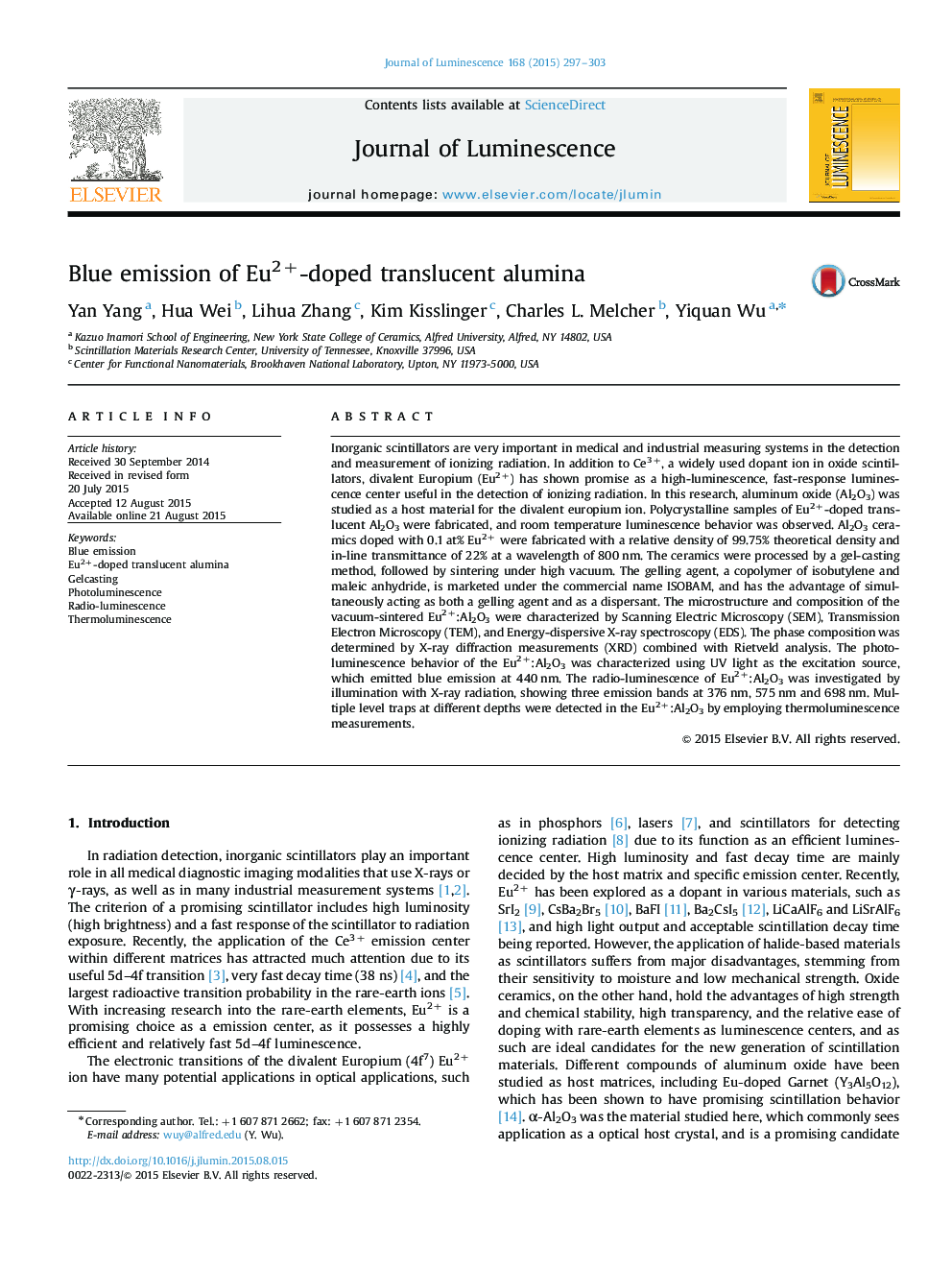| Article ID | Journal | Published Year | Pages | File Type |
|---|---|---|---|---|
| 5399306 | Journal of Luminescence | 2015 | 7 Pages |
Abstract
Inorganic scintillators are very important in medical and industrial measuring systems in the detection and measurement of ionizing radiation. In addition to Ce3+, a widely used dopant ion in oxide scintillators, divalent Europium (Eu2+) has shown promise as a high-luminescence, fast-response luminescence center useful in the detection of ionizing radiation. In this research, aluminum oxide (Al2O3) was studied as a host material for the divalent europium ion. Polycrystalline samples of Eu2+-doped translucent Al2O3 were fabricated, and room temperature luminescence behavior was observed. Al2O3 ceramics doped with 0.1Â at% Eu2+ were fabricated with a relative density of 99.75% theoretical density and in-line transmittance of 22% at a wavelength of 800Â nm. The ceramics were processed by a gel-casting method, followed by sintering under high vacuum. The gelling agent, a copolymer of isobutylene and maleic anhydride, is marketed under the commercial name ISOBAM, and has the advantage of simultaneously acting as both a gelling agent and as a dispersant. The microstructure and composition of the vacuum-sintered Eu2+:Al2O3 were characterized by Scanning Electric Microscopy (SEM), Transmission Electron Microscopy (TEM), and Energy-dispersive X-ray spectroscopy (EDS). The phase composition was determined by X-ray diffraction measurements (XRD) combined with Rietveld analysis. The photoluminescence behavior of the Eu2+:Al2O3 was characterized using UV light as the excitation source, which emitted blue emission at 440Â nm. The radio-luminescence of Eu2+:Al2O3 was investigated by illumination with X-ray radiation, showing three emission bands at 376Â nm, 575Â nm and 698Â nm. Multiple level traps at different depths were detected in the Eu2+:Al2O3 by employing thermoluminescence measurements.
Related Topics
Physical Sciences and Engineering
Chemistry
Physical and Theoretical Chemistry
Authors
Yan Yang, Hua Wei, Lihua Zhang, Kim Kisslinger, Charles L. Melcher, Yiquan Wu,
